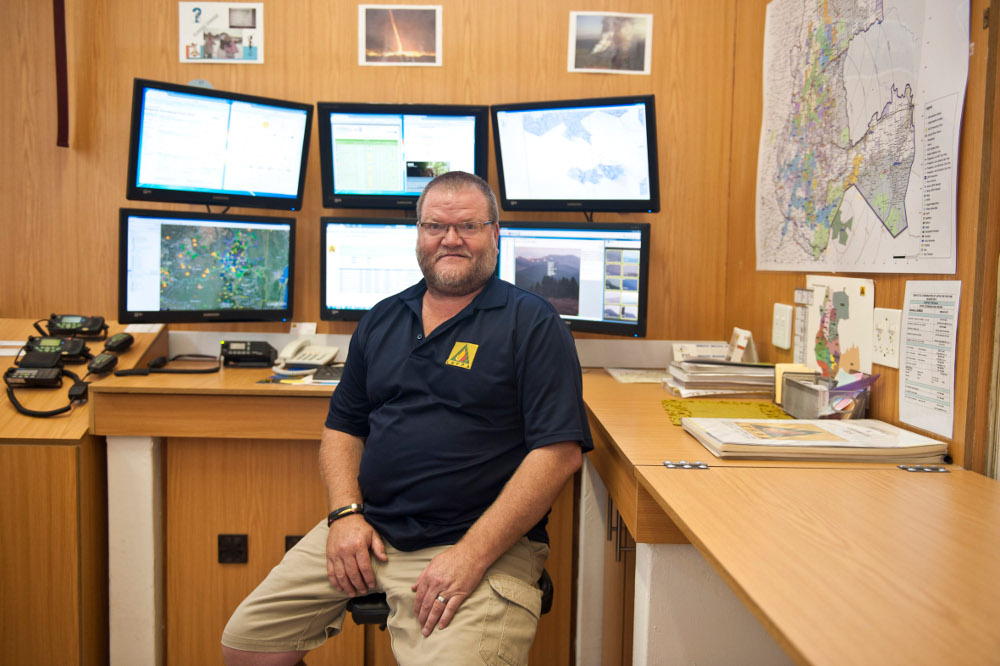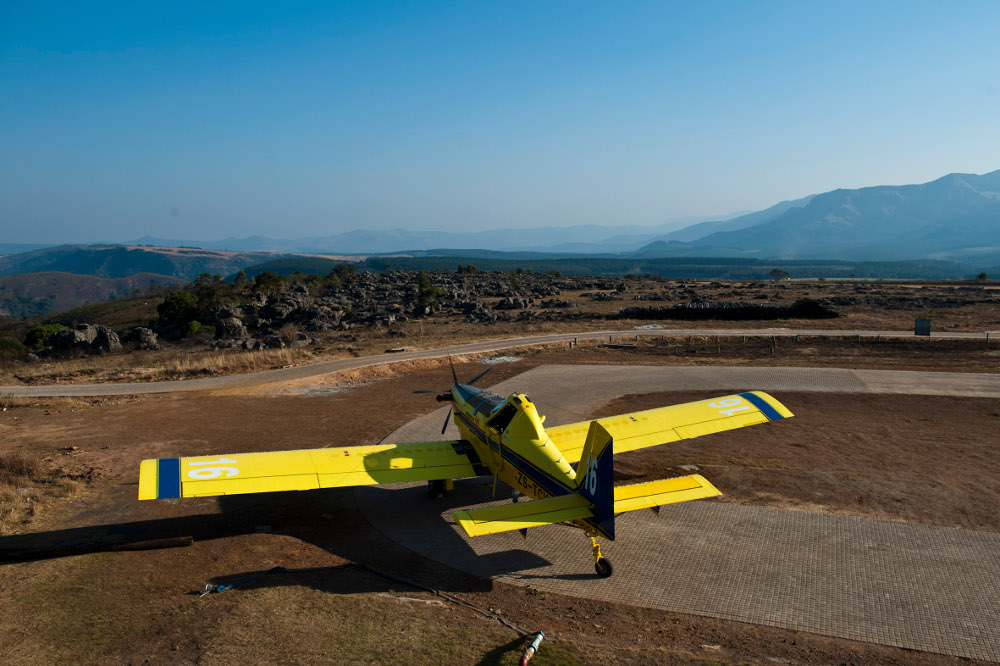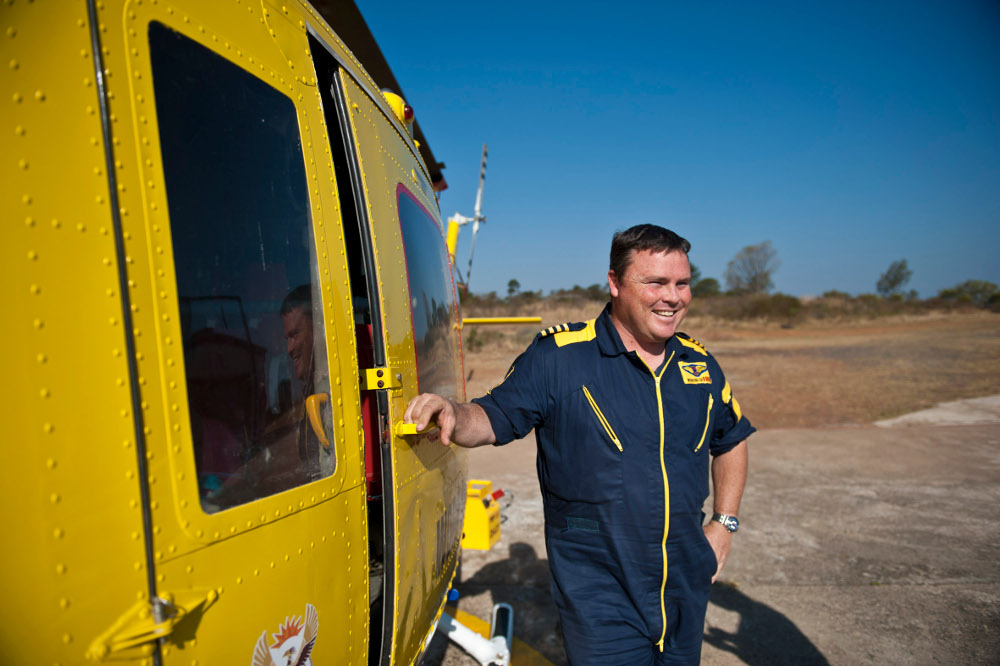Celebrity chef Nigella Lawson.
When the gusty August winds make their way into Mpumalanga, all it takes is a solitary puff of smoke on the horizon to fill locals with dread.
This time of year foresters, farmers, conservationists and government officials alike watch the skies, ready to spring into action at the first sign of fire. Thousands of firefighters prepare to battle flames on a daily basis, while airfields across the province become home to aircraft on stand-by to douse fires from a height.
Fires break out regularly across many other provinces at this time of the year, but they don’t attract such a large-scale and costly operation as this area does. Although incidents in the Free State might destroy grazing land and perhaps some livestock, a runaway fire here could devour millions of rands’ worth of timber in mere minutes.
Big forestry is heavily invested here and is a strategically important sector for the Mpumalanga economy, to which it contributes 4.7%.
The Lowveld and Escarpment Fire Protection Association (Lefpa) is a nonprofit body in charge of an area of 1.8-million hectares stretching from Bushbuckridge near the Kruger National Park down to Barberton.
Membership fees
Members pay fees per hectare: R1.37 for the basic membership and R23.50 for an aerial membership. Aircraft are only called on when ground teams are unable to control a fire, and Lefpa spends millions on leasing the aircraft each fire season – which typically ranges from mid-June to mid-October – from suppliers such as the FFA, which supplies more than 95% of the firefighting aircraft in the country.
The Air Tractor 802, a water bomber, costs R400 a minute to fly, said Lefpa’s general manager, André Scheepers. The member requesting the aircraft is billed for the cost of operating it.
The job of an aerial firefighter entails hours of boredom and moments of sheer terror. Egg van Dyk, stationed at Graskop airfield, flies a Huey helicopter that served three years in Vietnam during the war. “We can sit for as long as a month [without going out],” Van Dyk said. “It’s been very dry, and it all depends on the wind … but when Mother Nature gets pissed, then things get exciting.”

Lefpa boss André Scheepers. (Photos: Delwyn Verasamy, M&G)
Firefighters usually fly when weather conditions are at their worst but sometimes the wind is so strong it is simply too dangerous to fly. Fires also can’t be fought from the air at night as visibility is too poor.
Bombers and helicopters douse the flames, and spotter pilots are in charge of communication and control of the other aircraft. Water alone doesn’t do the job: a retardant is injected into the water, creating a foam-like substance that increases the surface area of the water eightfold.
On high alert
Lefpa statistics show that fires in the area numbered 1 500 in July alone. But August remains the riskiest time as vegetation becomes dry and the wind picks up.
The risk of fire and the rate at which it would spread is forecast by the Fire Danger Index (FDI), which takes into account factors such as temperature and wind speed to predict the risk, ranging from blue (low danger) to red (extreme danger).
Today is a green day, but, even so, cameras have picked up smoke billowing up from behind a hill. Adrian Daniel is the general manger of EnviroVision Solutions (EVS), developer of the long-range outdoor wildfire detection system known as ForestWatch.
The software has allowed companies to take lookouts out of towers and replace them with cameras on towers ranging from 6m to 72m high. Footage is coupled with digital terrain monitoring, allowing the system to pick up any changes in the landscape. Today, the smoke is just from a landowner burning a firebreak, who claims to have the situation under control.
The EVS control room looks like something from a movie. Large screens are mounted above and alongside one another and display images of the area, which are updated every three minutes. Radios buzz and large maps spanning much of the wall show the lay of the land and where each camera is located as well as their visual radius.
The footage also proves useful in legal disputes, which, according to Scheepers, are becoming more frequent as the economy slows. “The guys are feeling the pinch, and maybe a farmer’s neighbour has burnt him not just once but a couple of times,” he said.
“The insurance companies are saying: ‘We can’t take the bite for this anymore. We have to start taking action: find him negligent and recover those costs’.”
Firebreak permits
Lefpa is also responsible for issuing permits to landowners to burn firebreaks and records show that 113 900 hectares were burnt since January in the prevention of fire.
Ironically, runaway fires during firebreak operations are one of the main causes of wildfires, while others include unattended fires, sparks from machinery, arson and even honeycatchers who smoke out bees.
Forests in this area were planted for the gold mining industry, which required underground timber supports. The soil and the climate were soon found to be well suited to forestry and today plantations thrive above abandoned mine shafts.

The air tractor costs R400 a minute to fly.
Both eucalyptus and pine are used to make paper and paper packaging products. Eucalyptus, a hardwood is also used to produce mining and transmission poles and dissolving wood pulp, which has applications ranging from textiles to food. Pine, a softwood, is also used for structural and furniture timber.
Both types of trees contain highly flammable oils but pines are considered more volatile. The heat from a fire can cause the tree to boil like a kettle, causing the liquid inside to shoot up several metres into the sky – something pilots here are familiar with.
Fire devils
Also fairly commonplace here is the sight of a column of fire – known as a rotating fireball, a ribbon or a fire devil – that can reach as high as 80m into the sky.
Many have seen it from the sky, fewer have seen it from the ground, said spotter pilot Mike Assad.
“One has passed by me just 20m away – it just depends on weather conditions when there is hot air and cold air – this thing starts to whirl. It’s about this thick,” he says, holding his arms a metre apart. “It roars like thunder and the faster this thing starts to spin it goes from an orange to almost a white.”
But nothing quite measures up to the devastation seen in 2007, when 64 000 hectares were devoured in seven days. Adverse weather conditions sparked fires not only in Mpumalanga but also countrywide and claimed 20 lives in fires so intense and destructive they are called firestorms.
In the Lefpa area, some firefighters were trapped in their vehicle, which had tipped over and was consumed by the fire. Some others jumped into a water tank and were boiled alive.
Lost timber
Mpumalanga’s forestry industry was hit the hardest, having lost over 9% of its planted area, according to Forestry South Africa. Countrywide, the total loss was valued at R1.4-billion in lost timber.
Fire may be a destructive force but it has created jobs for firefighters in South Africa through Working on Fire, an expanded public works programme, and funded by government. Nationwide, Working on Fire has trained and employs 5 000 firefighters and boasts the highest female firefighter staff complement in the world.

Pilot Egg van Dyk.
Zodwa Msimango, a helicopter crew leader for Working on Fire, has been a firefighter for seven years.
The crew, known as the Mataffin Hotshots, had their skills tested in a plantation near the Swaziland border where they rescued three firefighters who had been trapped, two of which had collapsed from smoke inhalation. They were awarded by Working on Fire for their bravery and are considered heroes in the community.
Msimango says she loves her job and is not scared to fight fire but admits: “Sometimes when we go up we don’t know if we are going to come back.”
Firefighting becomes a bit of an addiction, said helicopter pilot Mark Jackson. “You’re always being challenged and tested and that is what brings you back to the next fire.”